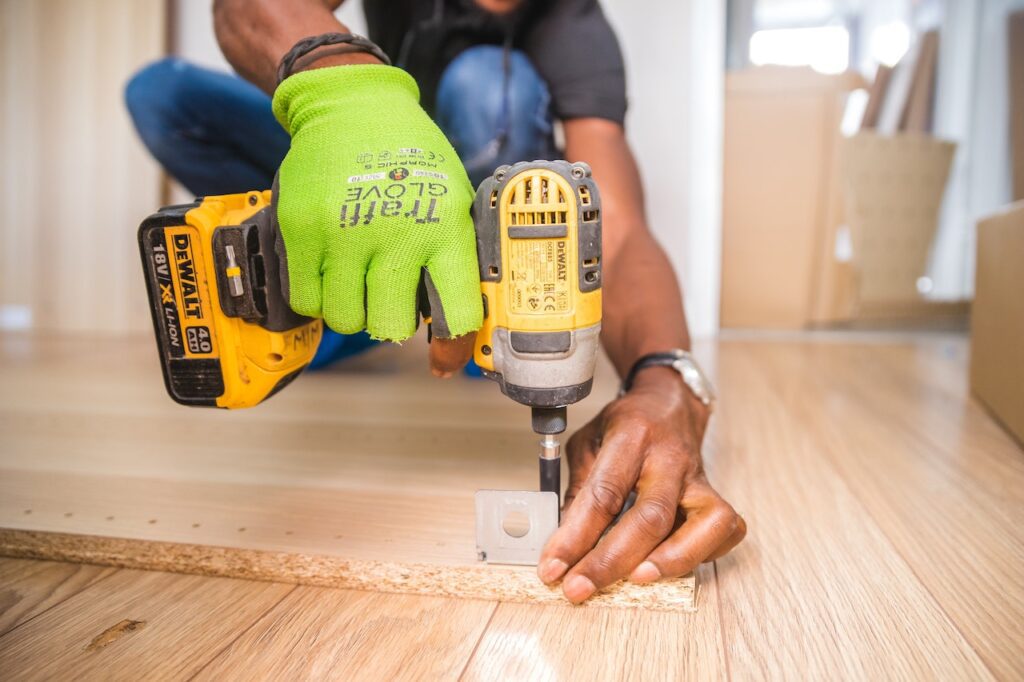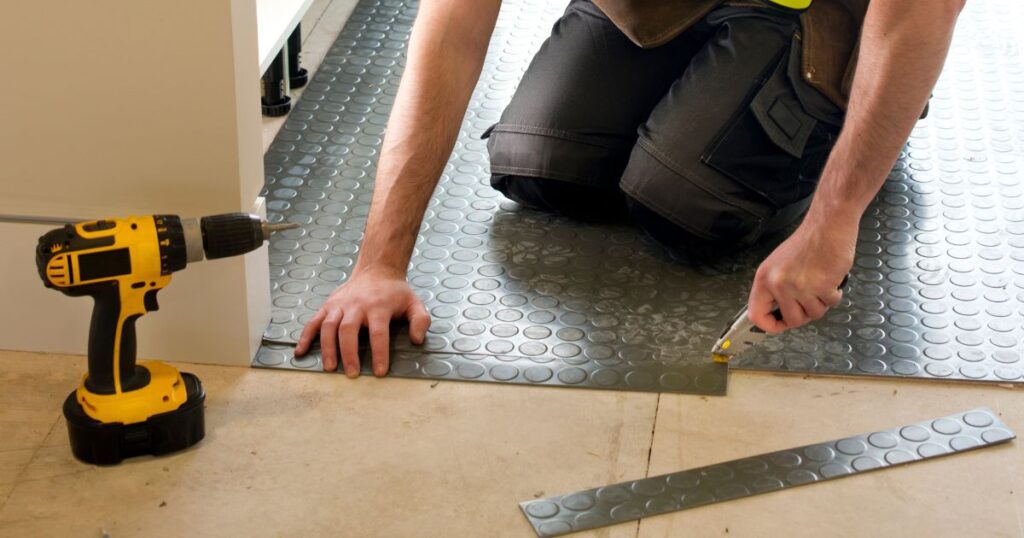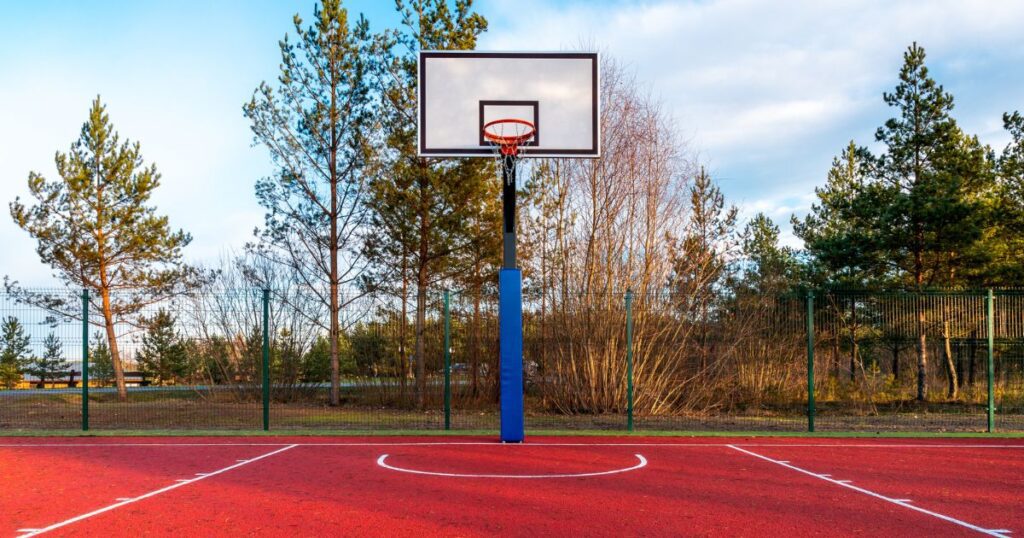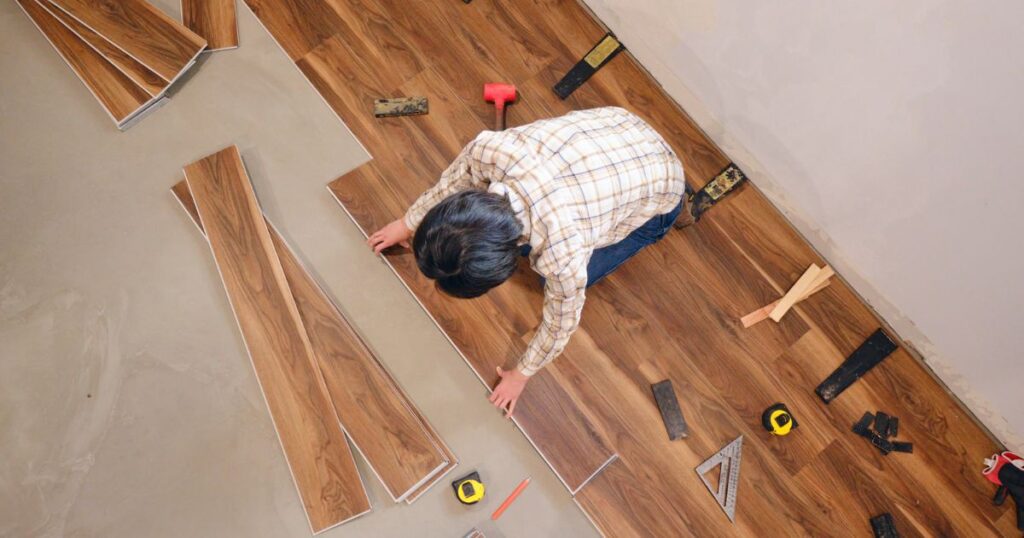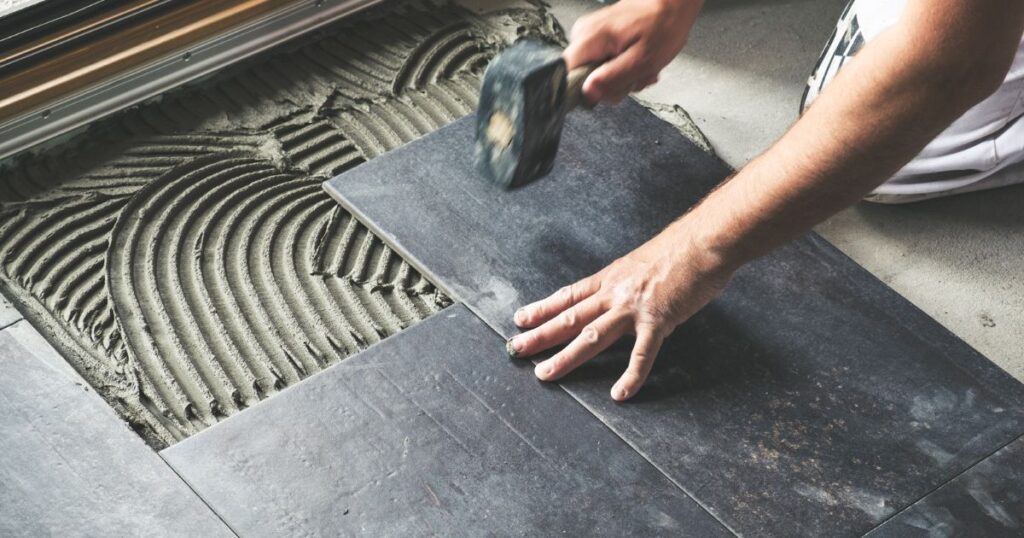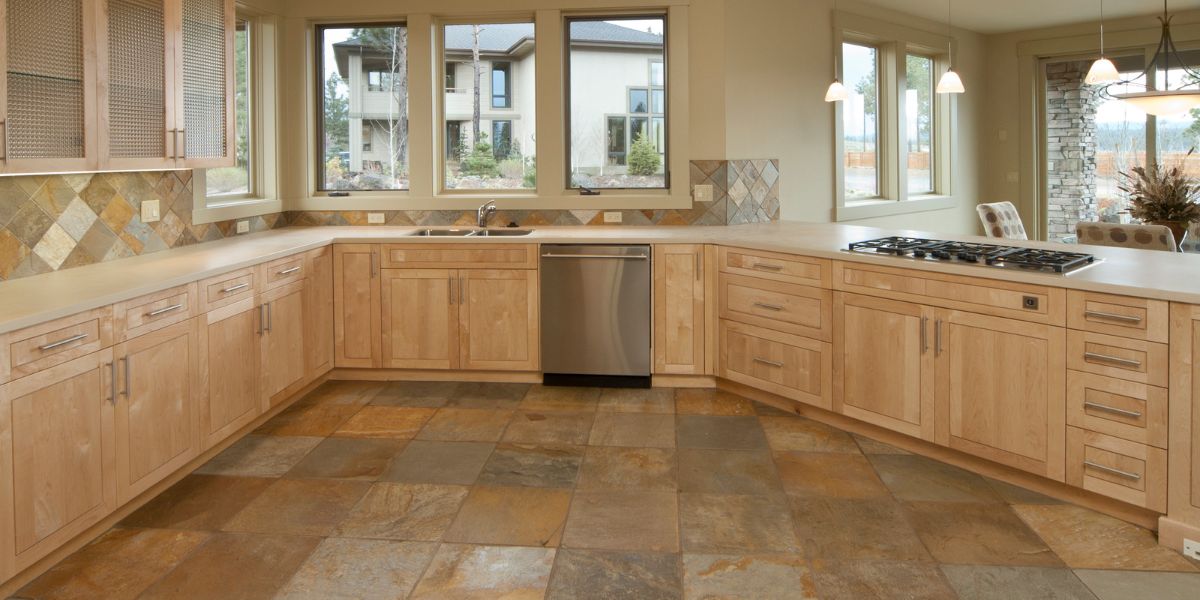
The Importance of Flooring in Interior Design
As someone who has spent years in the interior design industry, I can tell you that there are few things more important than flooring. It’s the foundation of any room and can make or break a space.
Far too often, people overlook the impact that flooring can have on a room’s overall aesthetic. They get so wrapped up in choosing cabinets, selecting the right color scheme, and picking out furnishings that they forget to give their floors the attention they deserve.
Let me be clear: flooring shouldn’t be an afterthought. It should be one of your top priorities when renovating or designing any space.
The right flooring can completely transform a room, elevating it from something mundane to something truly breathtaking. On the flip side, poor quality or mismatched flooring can detract from even the most well-designed spaces.
The Evolution of Modern Flooring
Over the years, we’ve seen some incredible advancements in modern flooring technology. From sustainable bamboo to luxurious marble, there are more options than ever before when it comes to choosing your ideal flooring type. But this evolution hasn’t come without some hiccups along the way.
One trend that I just can’t seem to wrap my head around is laminate floors – which try to emulate real wood but always seem to fall short. Sure, they may look good at first glance but take a closer look, and you’ll see uneven measurements and awkward fits that scream “cheap”.
And don’t get me started on vinyl – which seems like an attempt at pretending your house is a 1970s disco club. But for all those missteps, there are certainly some excellent products out there, too – like luxury vinyl plank (LVP), which provides a high-quality finish without breaking your wallet.
Overview of Different Types of Modern Flooring
There are a lot of flooring options out there these days, so it’s important to choose the right one for your space. Hardwood floors are still a classic choice, and for a good reason – there’s nothing quite like the warmth and depth of real wood. But if you’re looking for something a little different, consider marble or even concrete – both of which provide a sleek, modern look that’s perfect for contemporary spaces.
If you’re more conscious about the environment or just looking to save some money, bamboo or cork flooring could be great options. Both are sustainable and eco-friendly alternatives to traditional hardwoods while being highly durable and comfortable underfoot.
Ultimately, when it comes to selecting flooring that meets your needs and style preferences, it’s important to visit a showroom with excellent customer service that provides a quality selection of flooring samples. You’ll want to see these products up close and personal before committing to installation in your home.
The Evolution of Modern Flooring
Flooring has come a long way since the days of dirt or straw floors. As interior design has evolved, so have our flooring options. The evolution of modern flooring is a reflection of our society’s desire to move forward and embrace new materials and technologies that are both practical and aesthetically pleasing.
One of the biggest drivers behind the evolution of modern flooring has been the demand for durable, low-maintenance options. In today’s busy lifestyles, people simply don’t have time to settle for high-maintenance floors that require constant attention.
Modern flooring offers a variety of durable options that can withstand heavy traffic and still look fresh for years to come. Another major driver behind the evolution of modern flooring has been advanced in technology.
We now have access to materials and manufacturing processes that were not available just a few decades ago. These technological advancements have enabled us to create innovative products like luxury vinyl plank (LVP) that look like real wood but are much more durable and easy to maintain than traditional hardwood floors.
The Importance Of Flooring In Interior Design
Flooring is one of the most important elements in any interior design project. The right floor can tie together all the other elements in a room or space, creating a cohesive design scheme that reflects your personal style and lifestyle needs.
Today’s customers have access to an incredible variety of modern flooring options, from hardwoods and marble to eco-friendly bamboo and cork materials. With so many choices available, it can be overwhelming trying to choose the perfect floor for your space.
However, by choosing wisely, you can add significant value to your home while achieving a fresh look that meets your lifestyle requirements. When considering different types of modern flooring samples for your kitchen or bathroom remodel project, it’s important to keep durability and maintenance in mind as well as aesthetics.
High-traffic areas require durable floors, while low-traffic spaces may benefit from more delicate options. With the right floor, you can create a space that is both beautiful and functional, adding value to your lifestyle and your home overall.
Overview Of The Different Types Of Modern Flooring
The variety of modern flooring options available today can make choosing the right one for your space a daunting task. However, by understanding the different types of modern flooring and their unique characteristics, you can make an informed decision that fits your style and practical needs.
Hardwood flooring remains a classic choice for its timeless beauty and rich look. Different types of hardwoods provide unique features that offer versatility in design.
However, hardwoods require regular maintenance to keep them looking new. Marble flooring offers a luxurious and elegant option for high-end interior design projects.
Its natural veins add depth to a room’s decor creating an inviting comfort while requiring careful maintenance. Eco-friendly materials like bamboo or cork are fast becoming popular choices due to their sustainability and durability features while retaining their natural beauty.
Meanwhile, low-maintenance options such as luxury vinyl plank (LVP) or concrete flooring offer easy-to-clean solutions with customizable styles suited to different rooms. No matter which modern floor you choose it is essential that it suits both your current lifestyle requirements but also remains versatile enough to accommodate future changes in taste or functionality of your living space.
High-End Flooring Options
Hardwood Flooring: The Classic Choice
When it comes to high-end flooring, hardwood is the classic choice. And for good reason! Hardwood floors provide a timeless and elegant look that can match any decor.
With a variety of different types of hardwoods and finishes available, you’re sure to find something that matches your style and taste. But before you jump on the hardwood bandwagon, it’s important to consider its pros and cons.
Sure, it looks amazing and adds value to your home, but it can also be expensive and require more maintenance than other flooring options. And let’s not forget about the dreaded scratches that can appear from even the slightest movements of furniture or pets.
If you’re ready to take on the challenge of maintaining hardwood floors, then go for it! But if you have a busy lifestyle or want something low-maintenance, there are other high-end flooring options out there.
Marble Flooring: Luxurious and Elegant
If you want your home to scream “luxury,” then marble flooring is the way to go. With its unique veining patterns and luxurious feel underfoot, marble is a statement piece that will never go out of style. There are several types of marble available in today’s market including Carrara, Calacatta, Emperador, Crema Marfil just to name a few.
Each type has its own unique characteristics providing homeowners with endless possibilities when searching for their perfect match! Now let’s talk about maintenance – because we all know marble isn’t known for being low-maintenance.
Keeping your marble floor looking fresh and clean requires regular cleaning with mild soap and water or specially formulated cleaners designed for this specific flooring type. Both hardwood & marble have their own strengths & weaknesses – deciding which one is best depends on many factors, including quality preference, lifestyle & maintenance needs.
It’s best to visit stores providing flooring samples & measuring services to get an idea of the look you want to create. With so many options available today, choosing the perfect flooring for your home has never been easier!
Maintenance tips for marble floors
Marble is undoubtedly beautiful, but it’s also high maintenance – scratches and stains are easily visible. It’s important to clean up spills immediately using a dry or wet cloth and avoid setting objects on the marble for too long. Avoid using acidic cleaners like vinegar or lemon juice as they can etch the surface of the marble, leaving permanent marks.
Opt for mild soap and water or specially formulated cleaners designed specifically for marble floors. Marble is also vulnerable to moisture so ensure that its surface is always dry by mopping it regularly with a microfiber mop – never use a vacuum cleaner as it can scratch or damage its surface.
If you’re considering marble flooring, be prepared to put in extra effort in maintaining it correctly. But with proper care and attention, your luxurious investment will continue shining bright for years to come!
Eco-Friendly Flooring Options
Bamboo Flooring: Sustainable and Durable
When it comes to modern flooring options, bamboo is becoming increasingly popular as an environmentally friendly choice. It’s a fast-growing and renewable resource, making it incredibly sustainable.
Not only that, but bamboo floors are also highly durable and can withstand heavy traffic areas, pets, and even high heels without showing damage or wear. But let’s be real here – just because it’s eco-friendly doesn’t automatically mean it’s the best choice for your home or lifestyle.
Before settling on bamboo flooring, consider your needs as well as the style of your space. Bamboo flooring may not be suitable for every room in your home, and there are some downsides to consider.
Benefits of Bamboo Flooring
One of the primary benefits of bamboo flooring is its eco-friendliness. Unlike hardwoods that take decades to mature, bamboo grows quickly and can be harvested in just a few years.
It also requires less water than most plants during growth and doesn’t need pesticides or fertilizers. Another benefit is its durability.
Bamboo floors are highly resistant to scratches and dents (perfect if you have pets or young children), making them an excellent choice for high-traffic areas like hallways or living rooms. They’re also easy to maintain with regular sweeping or vacuuming.
How to Maintain Bamboo Floors
To keep your bamboo floors looking great for years to come, there are some simple maintenance steps you should follow. First off, avoid using water when cleaning – instead, use a dry mop or vacuum regularly to remove dust and dirt. If spills occur, clean them up immediately with a damp cloth (not soaking wet) – excess moisture can cause warping in the planks over time.
Be mindful of what you put on top of your floors. Furniture with sharp edges or heavy weights can scratch or dent the surface, so consider using felt pads under chair legs and other pieces to protect the floors.
Cork Flooring: Comfortable and Sound-Absorbing
Another eco-friendly option for modern flooring is cork. It’s made from the bark of cork oak trees, which can regenerate after harvesting, making it a highly sustainable choice. Cork floors offer a unique look and feel that can add character to any space.
But just like bamboo flooring, cork may not be right for every home or lifestyle. There are pros and cons to consider before making a decision.
Advantages of Cork Flooring
One of the main advantages of cork flooring is its comfort. Unlike hardwood floors (which can be hard on your feet), cork is softer and more cushioned underfoot – perfect if you spend a lot of time standing in your kitchen or entertaining guests in your living room.
Another advantage is its sound-absorbing qualities – perfect if you live in an apartment or have noisy upstairs neighbors. Cork floors can significantly reduce noise levels both within your own home as well as outside noise from entering your space.
Disadvantages of Cork Floors
One downside to consider is that cork floors are susceptible to dents and scratches – even more so than bamboo flooring. This means you’ll need to be extra careful when moving furniture across the floor or wearing high heels. Cork floors also require regular maintenance to keep them looking their best.
Like bamboo, they should never be soaked with water during cleaning (dry sweeping and vacuuming are best). You’ll also need to reseal them every few years to protect against moisture damage.
How To Clean Cork Floors
To clean your cork floors, start by sweeping regularly with a soft-bristled broom or vacuum (using the hard floor setting). Avoid using steam cleaners or wet mops, as excess moisture can damage the cork.
Instead, use a damp mop with a mild cleaning solution specifically designed for cork floors. Be sure to wring out the mop well before using it on the floor to avoid saturating the planks.
Low-Maintenance Flooring Options
Luxury Vinyl Plank (LVP) : Stylish, Affordable, Easy-to-Clean
Laminate flooring may have been popular before, but today’s generation has moved on to something better. LVP is the new go-to flooring choice for people looking for a durable, low-maintenance option that matches their lifestyle. It’s stylish, affordable and easy-to-clean; the ultimate trifecta of modern flooring options.
There is a variety of LVPs available in the market today that can match any design scheme. From bright colors to subdued hues, you can pick and choose what best suits your house or business space.
But it’s not just about aesthetics- LVP also has practical benefits like water resistance and durability that make it ideal for high-traffic areas like kitchens or living rooms. Installing LVP is a breeze, too- with measurements and cutting done in advance at the showroom or by professionals at your home.
You don’t have to settle for a sub-par installation job or spend hours trying to figure out how to DIY it yourself. All you need to do is sit back and watch as your floor transforms into something beautiful.
Concrete Floors: Industrial Chic
Concrete floors used to be associated with warehouses and factories, but those days are long gone. Today concrete floors are considered industrial chic and add an element of style and warmth that other types of flooring cannot match. The benefits of concrete floors include durability, which makes them perfect for high-traffic areas like offices or showrooms.
They are also very easy to maintain since they don’t collect dust like carpeted surfaces do. Maintaining concrete floors is not difficult either – all you need is a simple broom for daily cleaning purposes, while periodic mopping will help keep them looking new.
If you love creativity, consider staining your concrete floor with colors that match your lifestyle or brand. It’s important to note that choosing low-maintenance flooring options doesn’t always mean sacrificing style for practicality.
LVP and concrete floors offer the perfect balance of both worlds. You can be satisfied knowing that guests will love the new look of your space while also enjoying the comfort and durability that these modern flooring options provide.
The Versatility of Carpet Tiles
Carpet tiles are a versatile and convenient option for flooring in any space. They are easy to install, customizable, and come in a variety of styles and colors.
Carpet tiles can be used to create unique designs or simply add a pop of color to any room. One advantage of carpet tiles is their ease of installation.
Unlike traditional carpets, carpet tiles can be installed without the need for professional help. This not only saves money but also gives homeowners the freedom to choose their own design and create their own unique look.
Additionally, if one tile gets damaged or stained, it can be easily replaced without having to replace the entire carpet. However, there is one major disadvantage to using carpet tiles: maintenance.
While traditional carpets need regular deep cleaning, carpet tiles require even more frequent cleaning due to the seams between each tile which can trap dirt and debris. Regular vacuuming and spot cleaning are necessary to keep your carpets in good condition.
The Quirkiness of Penny Round Tiles
Penny round tiles offer a unique and creative alternative to traditional floor tiling options. These small circular tiles come in a variety of colors, allowing homeowners to get creative with their designs.
Penny round tile floors can create an eye-catching statement piece that adds character and charm to any room. One interesting way penny round tiles can be used is by creating an ombre effect using different shades of the same color family.
This creates a subtle yet striking design that adds depth and dimensionality to your flooring. However, maintenance for penny round tile floors can be more difficult compared with other flooring options, such as vinyl or hardwoods, as dirt tends to hide within grout lines between each penny tile circle which needs regular maintenance attention.
Modern specialty floorings like carpet tiles or penny round tiles offer homeowners innovative ways to create fresh looks that reflect their personal style while being functional. When considering any modern flooring option, be sure to carefully weigh the advantages and disadvantages to ensure a forward-looking, stylish design that also fits your lifestyle and budget.
Frequently Asked Questions
What is the most popular flooring now?
Currently, the most popular flooring options include luxury vinyl plank (LVP), hardwood, and porcelain tile, as they offer a balance of aesthetics, durability, and versatility to suit various design preferences and lifestyle needs.
What floor is best for flooring?
The best floor for your specific needs depends on factors such as the room’s function, desired aesthetics, budget, and maintenance requirements. Common choices include hardwood for its timeless beauty, LVP for its durability and water resistance, and porcelain tile for its versatility and durability in high-moisture areas.
What floor for a modern kitchen?
For a modern kitchen, popular flooring choices include sleek and polished options such as porcelain tile with a contemporary design, concrete flooring with a minimalist aesthetic, or luxury vinyl plank (LVP) with a wood or stone look for a modern twist on traditional materials.
What are the three basic types of flooring?
The three basic types of flooring are hard surface flooring (such as hardwood, tile, or laminate), soft surface flooring (such as carpet), and resilient flooring (such as vinyl or linoleum).
What is the most timeless flooring?
Hardwood flooring is often considered the most timeless flooring option, as it brings warmth, natural beauty, and a classic appeal that can complement various design styles and withstand the test of time.
Which flooring is luxurious?
Flooring materials such as marble, natural stone, high-quality hardwood, or specialty tiles like terrazzo are often considered luxurious options due to their premium appearance, exquisite finishes, and high-end appeal.
Conclusion
The importance of choosing the right type of modern flooring for your space
When it comes to renovating your house, choosing the right flooring can either make or break the look of your home. Today, with a variety of modern flooring options available in the market, you can easily elevate the aesthetics and functionality of any room. You also need to keep in mind that each type of flooring has its own unique characteristics and maintenance requirements.
One key consideration when selecting modern flooring is your lifestyle. For instance, if you have children or pets at home, it’s essential to choose durable and easy-to-clean options like LVP or cork floors.
On the other hand, if you’re looking to add a touch of luxury to your space, marble floors would be an excellent choice. It’s also essential to consider factors like foot traffic and humidity levels when deciding on a type of flooring for a particular room.
RESOURCE: Dallas County Community College District: Construction Technology

